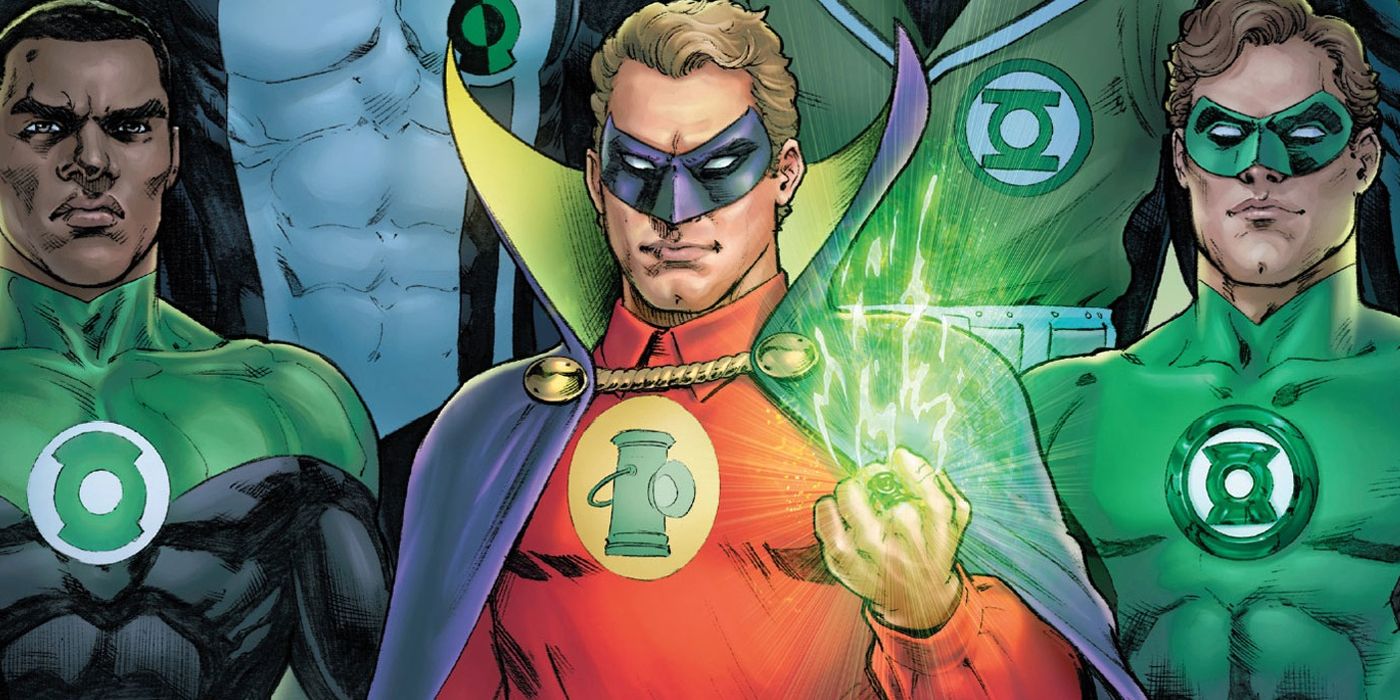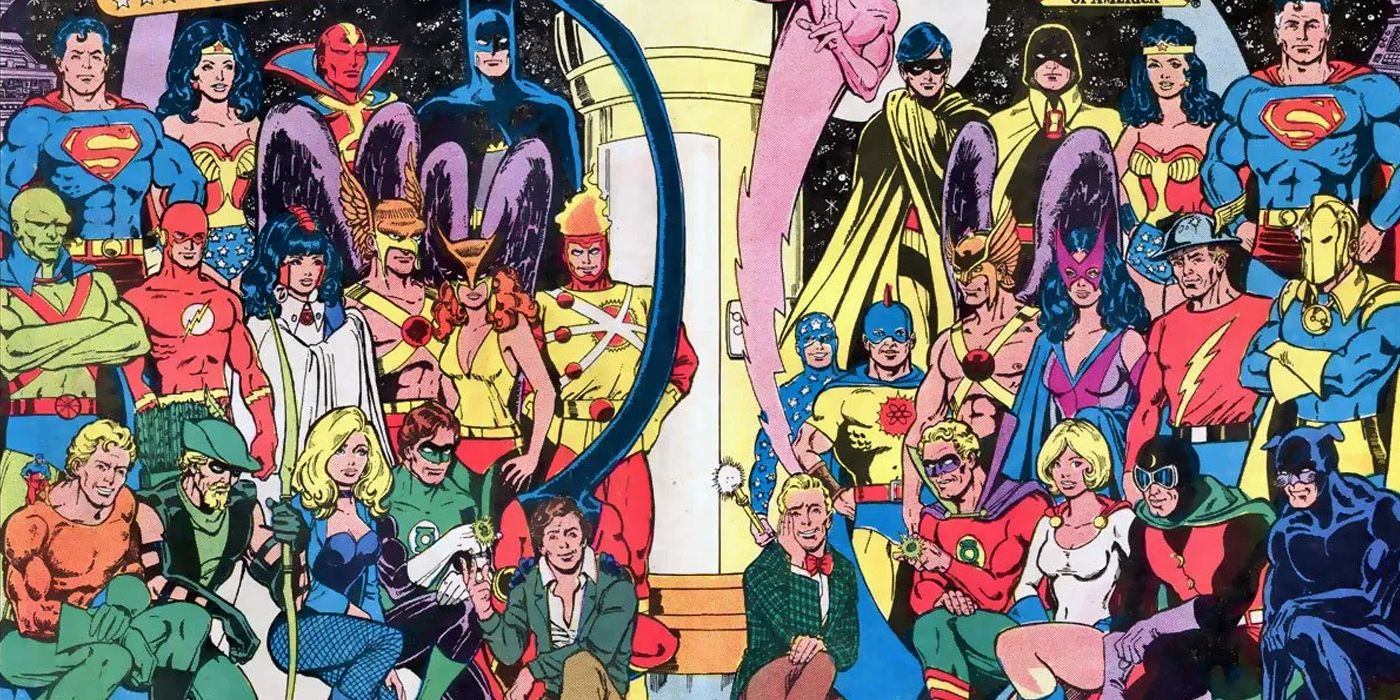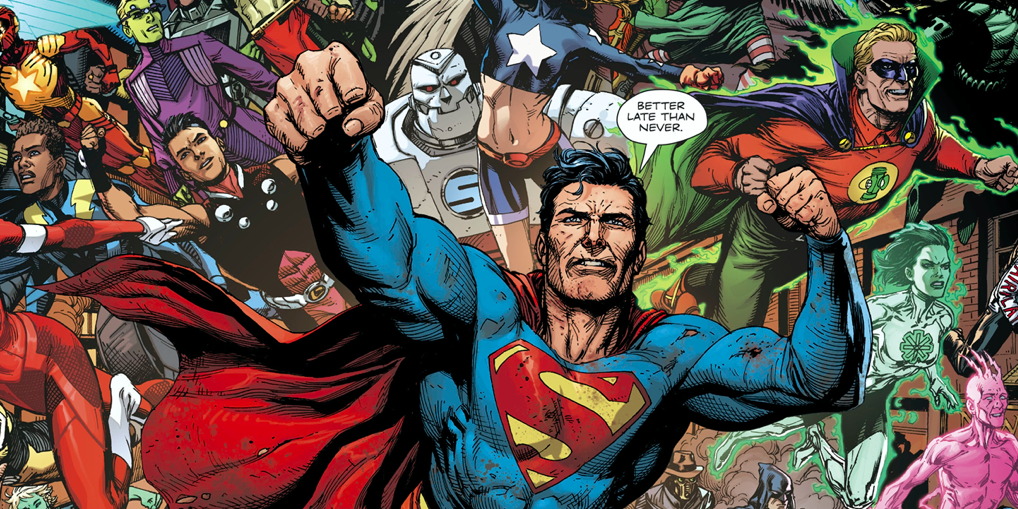WARNING: The following contains spoilers for the Green Lantern 80th Anniversary 100-Page Super Spectacular #1, by a whole host of superstar comic creators, on sale now.
Of all the characters and institutions in the DC Universe, few were altered more significantly during the New 52 era than the Justice Society of America. With the Golden Age history of the DCU altered by the events of Flashpoint and Doomsday Clock, the JSA was not only relegated to Earth-2 but significantly de-aged instead of serving as long as World War II. And while the subsequent DC Rebirth era teased at the return of the Justice Society, Doomsday Clock brought them firmly back into the present-day DCU, evidently with their Golden Age history intact.
This restoration is alluded to and seemingly confirmed with a passing reference in the Green Lantern 80th Anniversary special, with the "Secret Files" appendices to the oversized one-shot reveal the backgrounds of each of the various Green Lanterns, including Alan Scott.
Beyond Alan's restored Golden Age origins as a 1940s train engineer who barely survives a sabotaged train crash after inheriting a mysterious Green Lantern and superhero career in Gotham City, Alan Scott's appendix entry cites and reaffirms his history with the Justice Society.
The appendix cites that Alan was one of the co-founders of the JSA and served as a prominent member of the team until the 1950s, which tracks for established canon for the Society and its heroes.
As McCarthyism began to sweep across the country, public distrust in masked superheroes grew, leading to increased congressional scrutiny. During a heated congressional hearing, Alan and the Justice Society announced they would be retiring from superheroism rather than publicly reveal their identities. This echoes the original forced retirement of the Golden Age team, first depicted in 1979's Adventure Comics #466. In a short story by Paul Levitz and Joe Staton, the Helena Wayne Huntress of Earth-2 recalls that the Justice Society retired in 1951 under similar congressional circumstances.
The appendix goes on to reveal that "a Crisis" brought the Justice Society out of retirement, with the veteran characters then going on to take a mentor role for new generations of superheroes that had followed in their footsteps.
While not directly named, this lines up with the first team-up between the Justice Society and the Justice League in 1963's "Crisis on Earth-One!" and "Crisis on Earth-Two!" in Justice League of America #21 and #22, respectively, by Gardner Fox, Mike Sekowsky and Bernard Sachs. Following the creation of the Multiverse and reintroduction of the Golden Age superheroes in 1961's The Flash #123 by Fox, Carmine Infantino and Joe Giella, the first meeting between the Justice League and Justice Society led to annual team-ups between the JSA and JLA, often with the two teams sharing Thanksgiving dinner together.
In the 80s, Crisis on Infinite Earths merged Earth-1 and Earth-2 and rewritten their history that they were always part of the composite Earth before their eventual removal at the start of the New 52.
Scott Snyder's run on Justice League seemingly confirmed that the Justice Society were part of the main DCU's history as part of the team traveled back to 1941 for an impromptu team-up with the Justice Society against the Legion of Doom. The final issue of Doomsday Clock definitively reintegrated the JSA in the main DCU, serving as the inspiration for Clark Kent to become Superboy and appearing at the end of the story to help turn the tide of battle against a cadre of villains led by Black Adam in Washington, D.C.
With the DC Universe poised to be rewritten again by Dark Nights: Death Metal, the older Justice Society members have been teased to make a reappearance in the ongoing crossover, where' they'll have an emotional reunion with Wally West, who has been aware of the changes to reality caused by Doctor Manhattan for some time.
The Green Lantern 80th Anniversary seemingly confirms that the team's pre-Flashpoint history is more-or-less restored, something which has only been hinted at since Doomsday Clock while the team's presence outside of the earlier story has been conspicuously absent, likely not to spoil Doomsday Clock's final reveal. With the Justice Society's Golden Age history back in continuity, the team not only has their original origins back but are restored as the superhero foundation to the entire DCU, led by Alan Scott to serve as a clear, shining beacon of what superheroes in the shared comic book universe can and should be.



